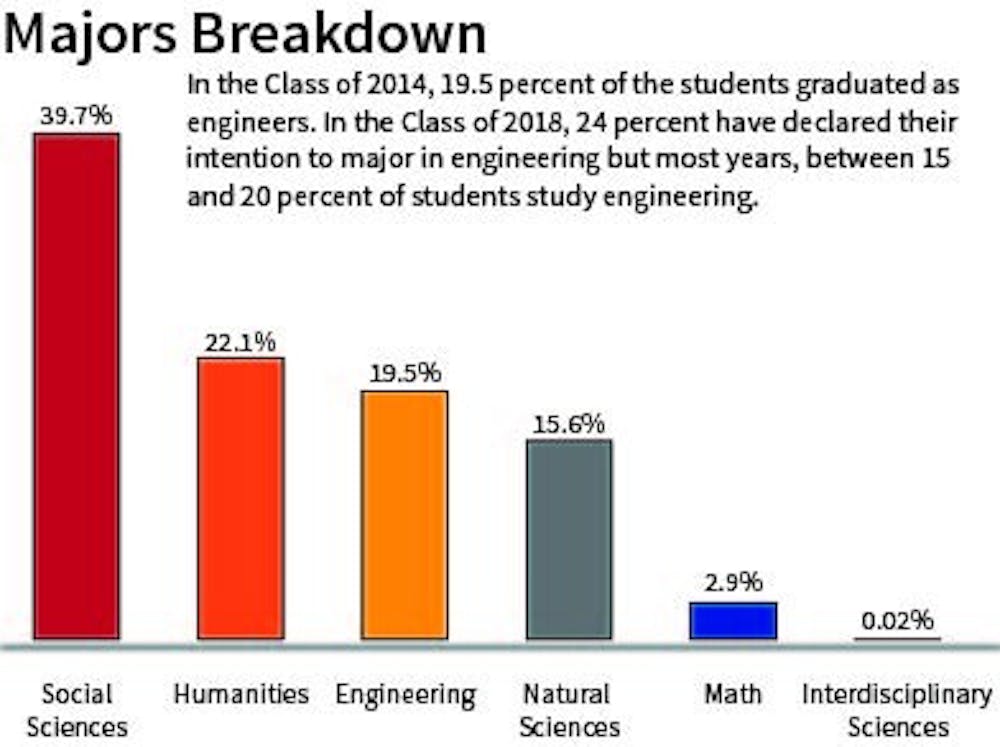Approximately 70 percent of students change their course of study during their time at the University, Dean of Admission Janet Rapelye said in a recent interview, citing an internal study she had seen.
Associate Dean of the College Elizabeth Colagiuri said she was unable to confirm the accuracy of this number but confirmed she was aware that this study had been conducted. This particular study was conducted at the time of the Class of 2018’s matriculation, Colagiuri said.
“At the point of matriculation, we typically survey students to find out what [academic] divisions they think they might be interested in majoring in,” Colagiuri explained. “It’s one of a number of surveys we conduct at various points in the Princeton experience.”
The study generally looked at which of the four major disciplines students were interested in concentrating in: humanities, social sciences, natural sciences and engineering.
Neither Rapelye nor Colagiuri provided information on which areas of concentration received the most members, but data included in the University's Common Data Set, which is a standard disclosure form filled out by universities, suggests that one discipline that sees a net decline in students over the students’ time at Princeton is engineering.
Rapelye provided the distribution of freshmen enrolled as A.B. or B.S.E. for the Class of 2018, saying that 65 percent of the freshman class have declared themselves as intended A.B., 24 percent as intended B.S.E. and 11 percent still unsure.
The University website claims between 15 percent and 20 percent of students study engineering most years, and the Common Data Set from the 2013-14 year states that 19.5 percent of degrees awarded in the 2013 year were for engineering.

In addition to this 19.5 percent in engineering, the Common Data Set indicates that 22.1 percent of students earn degrees in the humanities, 15.6 percent in the natural sciences, 39.7 in social sciences and 2.9 percent in math. The remaining 0.2 percent are described as majoring in interdisciplinary studies.
Nationwide, approximately 80 percent of students change their majors in college, according to the National Center for Education Statistics, which also indicates that students will change their major an average of three times.
“I’m not surprised; to me it is part and parcel of what we seek to do,” Colagiuri said. “In our view, the starting point is simply that. We adhere to the liberal arts philosophy.”
Colagiuri also said the University's distribution requirements are a potential cause of concentration changes because of the breadth in education they offer students.

“In our mind, we fully expect Princeton students will come in and discover all sort of disciplines and fields of study that may not have been available to them in the past,” Colagiuri said.
According to Colagiuri, the current requirements of the University’s distribution requirements has been in place in a similar form since some time in the mid-1990s.








